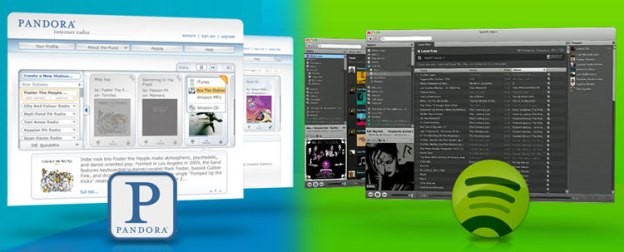
Guest contibuter Mark Beare is the president and founder of ReviverSoft, which helps people optimize and maintain their computers through its award-winning software and blog. He’s an avid audio junkie by hobby, and a long-time Digital Trends fan.
As someone who spends a lot of time on a computer, loves many different types of music, and enjoys discovering new music, I (along with many people) was excited when Spotify launched in the US in July. Unfortunately, the streaming music service I had been clamoring for didn’t work out quite as I had imagined. After a brief love affair with Spotify, things fizzled out quickly, and now I’m back in the arms of Pandora. Here’s what happened.
The honeymoon period
At first, Spotify’s service was really impressive. Very rarely would I not be able to find a song I was looking for, and I never had to worry about my music collection when moving from computer to computer. No matter which computer I was on, or even which mobile device, all my music was right there and organized how I liked it.
After initially signing up for the service, it was a lot of fun to put play lists together of songs that I liked. I have been a Pandora user for some time, so I based a lot of my playlists off of what I already liked on Pandora. I would make a good playlist, thrash it to death till I was sick of all the songs, and then go to work on a new playlist. I paid for the premium service ($9.99 a month), so I also listened to my playlists in the car using offline playlists.
One thing that did annoy me was that I could not use the songs on my iPod shuffle, which is what I use when I work out. This is where I really want fresh music for use offline.
A labor of love
While I initially really liked making playlists in Spotify, after a couple weeks it became more of a chore than a pleasure. I exhausted the “What’s New” and “Top Lists” playlists, then I found myself starting to have to put in a considerable amount of time to find music for new playlists. This wasn’t fun anymore. What used to be something that I did while working became something I had to do instead of working.
Pandora, I miss you
Within a couple of weeks, I found myself longing for the “set it and forget it” ease of Pandora. All I had to do was pick one song that I liked, and then let Pandora do the rest. Also, Pandora recently added genre stations, which means you can pick a type of music you like or even just listen to today’s hits. This style of music selection fits in much better with my work than Spotify’s.
The love affair is over
After initially enjoying Spotify, and paying for the premium service, I cancelled the service within the first month to go back to Pandora. While Spotify would be revolutionary for some people, it really does not fit in with the way I like to listen to music during my work day. I honestly think that the only reason Spotify became so popular in Europe was simply because Pandora is not available there. People rave about Pandora in the US. They love it and find it to be an amazing service. I have not heard people refer to Spotify with this type of passion; people are just impressed with the selection. I think that it will not take too long before people start to realize that to use Spotify long term takes a time commitment that may be OK for some people, but not all. The same thing can be said for Turn Table.
For me, I am back to listening to Pandora for eight hours a day, and not once since switching back have I missed a single thing about Spotify.
Also check out our comparison: Spotify vs. Pandora vs. Grooveshark.



